The globalizing Local Project
As anyone who has lived here for more than a few years knows, it gets harder and harder to take home gifts for friends and family. You’ve already taken carpets, Thangkas, and enough pashmina to start a shop! You name it, expats have taken it home. And for Nepalis visiting family overseas, aside from granny’s pickles, what can be taken from Nepal that will be appreciated by young people growing up in the US, Australia or Europe?
Somewhere around mid-2017, I was facing this problem yet again. Then I came across a wonderful concept shop selling uniquely different, and, moreover, good quality locally made products. Opened in spring of 2017, officially in July of the same year, The Local Project Nepal was among the first three concept shops to open up in Kathmandu. But what exactly is a concept store? ‘Bringing different brands and designers together to combine new ideas that promote, suggest or support a certain theme or lifestyle’ is a standard definition. Certainly The Local Project Nepal brings together designers and manufacturers of different brands that appeal to a certain type of customer. The locations of their shops and the products inside, as well as the modern décor, signal quality and a certain price tag.
I talked with Sachin Shrestha, co-owner, about The Local Project’s beginnings. “My partner, Binam Shakya was a friend of the owner of Evoke who was in the process of building a community of creativity around his restaurant. This is how it began,” explains Shrestha. With Shrestha already working in the manufacturing industry and having contacts with young and new manufacturers/entrepreneurs it seemed a logical step for Shakya and Shrestha to come together. So successful was the store in Evoke’s compound in Jhamsikhel, that in December 2018 The Local Project Nepal opened its second outlet in Le Sherpa in Pani Pokhari.
What exactly is on sale? Aside from the beanies, notebooks and jewellery I have bought for gifts they also sell amazing copper ware, bags inspired by Mustang cloth, casual shoes, sportswear, paper goods, games, candles, natural beauty goods such as shampoo bars and Himalayan pink salt body scrub…. Around 40 different brands in total.
“Our original aim was to promote local producers while at the same time benefiting indigenous workers and resources,” states Shrestha. “But actually now we find we are working with brands that focus on different approaches. For example, some work with underprivileged groups, some aim to achieve fair wages for all, some concentrate on the design aspect. The majority of the manufacturers are small. Sometimes the owner is both the designer and craftsman.”
The most popular brands or products? “Most of the customers buy for gifts so jewellery and travel items are popular. I don’t really want to highlight just one of our great brands, but the bags and backpacks created by Mhecha are bestsellers. Not a single day goes by without us selling at least one Mhecha bag,” comments Shrestha. I want to know why they are so popular— with prices ranging from Rs 1,350 to Rs 4,750 these are not inexpensive items. I’m told that they have become a status symbol for the Nepali youth studying overseas. “We often get calls saying someone is going to study abroad the very next day, and do we have a certain bag in stock,” explains Shrestha. I take another look at the backpacks and bags.
Meantime I wonder what the future holds for The Local Project Nepal. I’m told that first of all they need to bring their website up to date. Particularly as they are looking to develop online ordering and overseas shipping—no small challenge. Second, an idea is running round Shrestha’s head to collaborate with concept stores overseas. Personally, I look forward to being able to send stunning Nepali made products home through an online shopping portal!
To find out more check out The Local Project Nepal on Facebook.
A Danish student adjusts to Nepali ‘hospitality’
It is now becoming the norm to fly abroad for higher education, but not often do we see foreign students in Nepali colleges. Raquel Maria Lorenzana Hesdorf, 29, is an exception. A native of Denmark, she is studying at Global Hospitality of Tourism and Hospitality Education (GATE) at Mandikhatar, Kathmandu.
Currently in the third year of her higher diploma program in hotel and restaurant management at GATE, Raquel seems to have fully embraced Nepal. She speaks with fondness about the land she now calls her second home. “It was just highways and moving trucks there for me, here I see everything, the landscape, the houses of the rich and poor and everything,” she compares the view from her balcony here in Kathmandu to what she saw from the balcony of her home back in Denmark. She tells me how endearing Nepal is to her and she credits this to the resilience and affability of the Nepali people.
“When I first came here, my Nepali friends showed me around and I could see the monuments in ruins because of the earthquake. The fact that my friends were worried that I wouldn’t like the crumbling temples and houses showed how much they cared.”
Raquel acknowledges the bad bits of Kathmandu: the pervasive dust, the inconvenient transport system. “But I also know things are slowly developing here. Even in the past two years, I have seen many improvements like things becoming more modern and that has certainly helped me adapt better.”
I ask her why she chose Nepal. Her eyes twinkle and she reminisces about how she grew up. “Denmark hosted quite a few refugees and for a time I was the only white girl in the neighborhood. I liked being around so many cultures and so choosing Nepal, a place with so many cultures, made sense.”
After completing high school, Raquel worked for a few years in sales and realized in her mid-20s that she was more suited for hospitality. She also had an epiphany that it was time to make her childhood dream of studying abroad come true. “I didn’t want to go to Spain or France because I wouldn’t be experiencing something truly new there.” Having convinced her parents, she came to Kathmandu.
Although she seems confident now, she tells us how she came unprepared. She experienced many cultural shocks. She realized that there were moments people here treated her differently because she’s white. “I remember going to a friend’s house. There, her family members treated me like I was very special and I realized it wasn’t the same with my other friends. You do not do that. Maybe it stems from the caste system but you treat my friends the same way you treat me.”
She also mentions how it is tough for her to negotiate rates with cab drivers. In another bewildering story, she recalls how, once, a driver thought she worked at GATE and asked her help for his daughter’s admission. She also tells us of a relationship here gone astray due to cultural differences between her and her Nepali boyfriend. “The advice I would give to international students coming here is to understand that the norms will not be the same here.”
In these times, she often received solace from other international students at her college. She credits them for helping her get acquainted to life in Nepal. “I have friends here who help me navigate my way around the city and have fun every day.” When not busy working at Aloft Hotel in Thamel, Raquel likes to go around town and explore.
Nepal has left an indelible mark on Raquel and she says Nepal is definitely a part of her future. She intends to return to Nepal later and give back in whatever way possible. But she is not the one to stay put. She likes change every once
in a while.
Basantapur Revisited: The iconic joints of the historic square
Let’s rewind the reels to the time when Basantapur stuffed your lungs with the smell of marijuana, freshly smoked cigars, mixed odor of foreign perfume and, oh, the strings of guitars playing the Beatles’ tunes. That era of Basantapur, when Jhochen was re-christened Freak Street, and there was no Thamel to compete against.Times have changed but Basantapur retains some of its old charm. You still hear the guitar chords, if more John Mayer this time, but youths continue to revive what the 60s’ tourist hub left behind. They try to do so by visiting these (moderately) old and famous cafes and restaurants of Basantapur.
Grasshopper Café
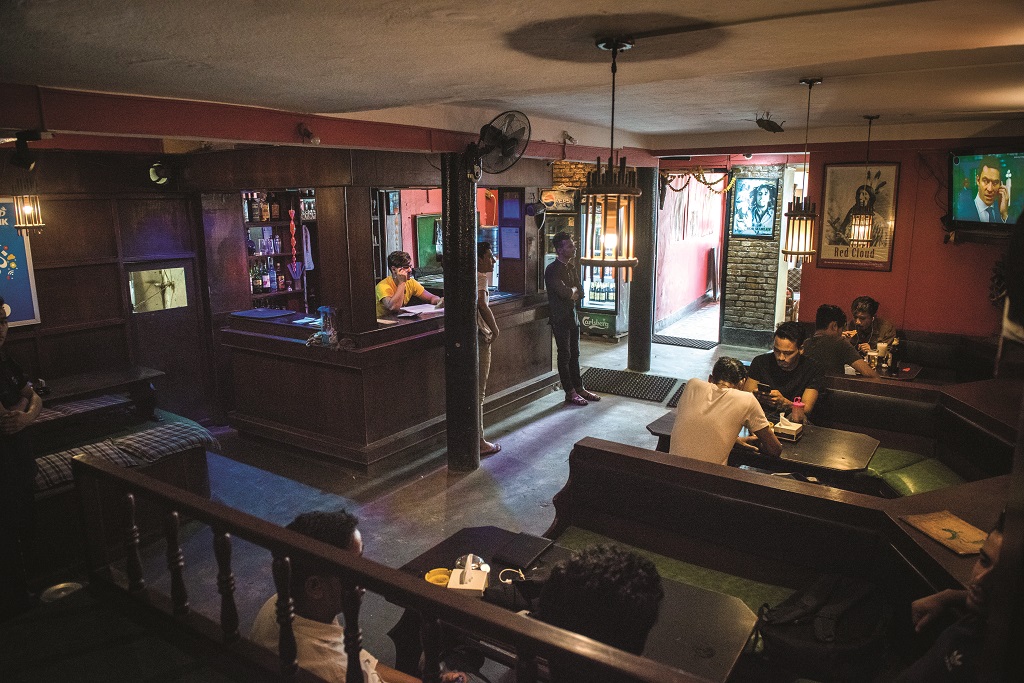
Located at the heart of the Basantapur Durbar Square, Grasshopper Café has been an established name for almost 20 years now. Established in 1999 by Kailash Shrestha, it is a well-known hub for get-togethers among both Nepali and foreign customers. “We’ve had customers from many countries in the past but the number has gone down of late,” says Sabin Thapa, a cashier at the café. (Blame the 2015 earthquake.) Pork chops, lasagna, and the sizzling momo are recommended.
Chameleon Diner
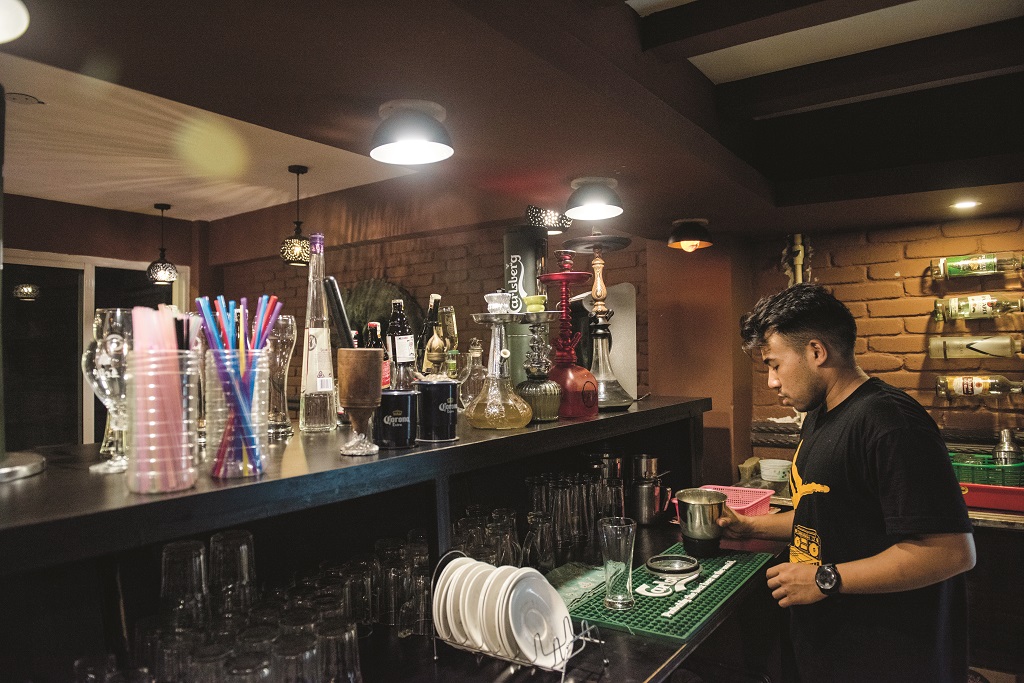
Established in 2008 by a group of enthusiast entrepreneurs as “Razzle Dazzle” (which changed into Chameleon Diner after the split between the partners), the diner is located on Basantapur’s Freak Street. Aditya Suwal, the second generation owner of the diner, has recently renovated it. “We used to have good customers, but then we started getting troubled by the ‘dons’ of Kathmandu. That’s when we thought of recreating a homely environment to get our good customers back,” says Suwal. The diner has now shifted to a new building and serves a great variety of imported beers and cuisines. With live music and bed & breakfast services to be included soon, Chameleon Diner is fully oriented towards customer satisfaction. Don’t forget to try the spicy pork, and the four-way pizza with bursting flavors.
Jessy Penny
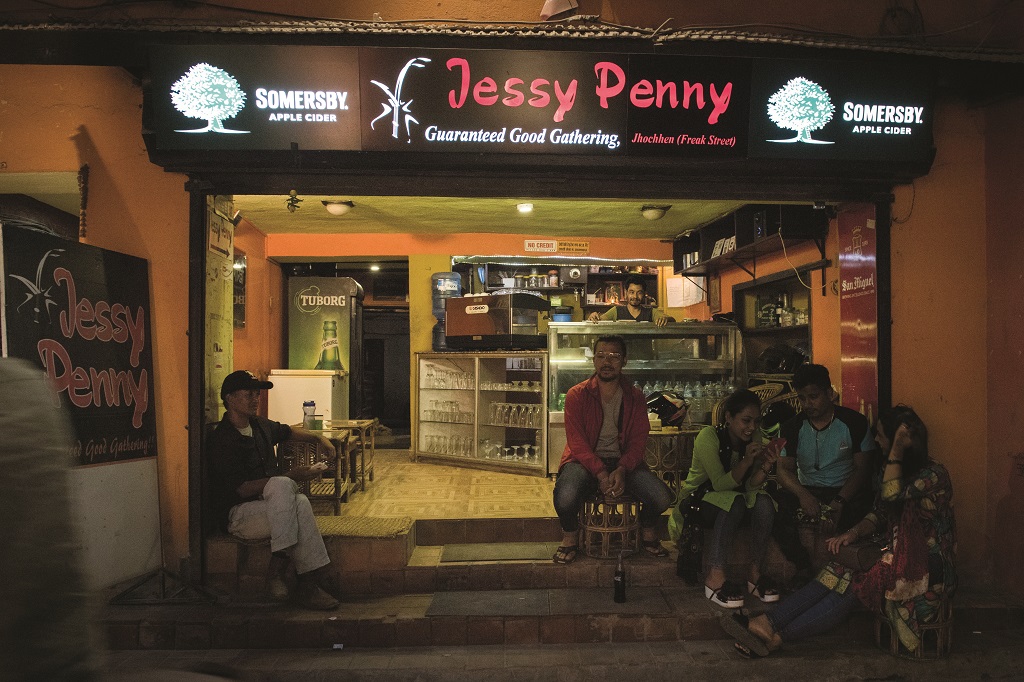
Anyone who’s been to Basantapur frequently has probably come across this place at least once. With almost 70 percent of the total customers being teenagers, Jessy Penny has crafted a place in the hearts of many. Established almost 14 years ago by Rajendra Bhakta Shrestha, this restro used to see many foreign visitors before the earthquake. New visitors are nearly not as many. While having a little chat with us, Sanobabu Maharjan—who’s been assisting his brother Rajendra in the business for the past eight years—mentioned the subtle difference between the customers then and now. “Back then, they would ask us about the type of hukkah we had, but now the first thing they ask of us is the Wi-Fi pass-word,” says Maharjan. The restau-rant has rooms categorized into King Size, Medium and Normal sizes. A new branch is planned in Mehpi, Kathmandu. A little pro tip: Do not forget a cocktail from the rich variety on offer.
Snowman Café
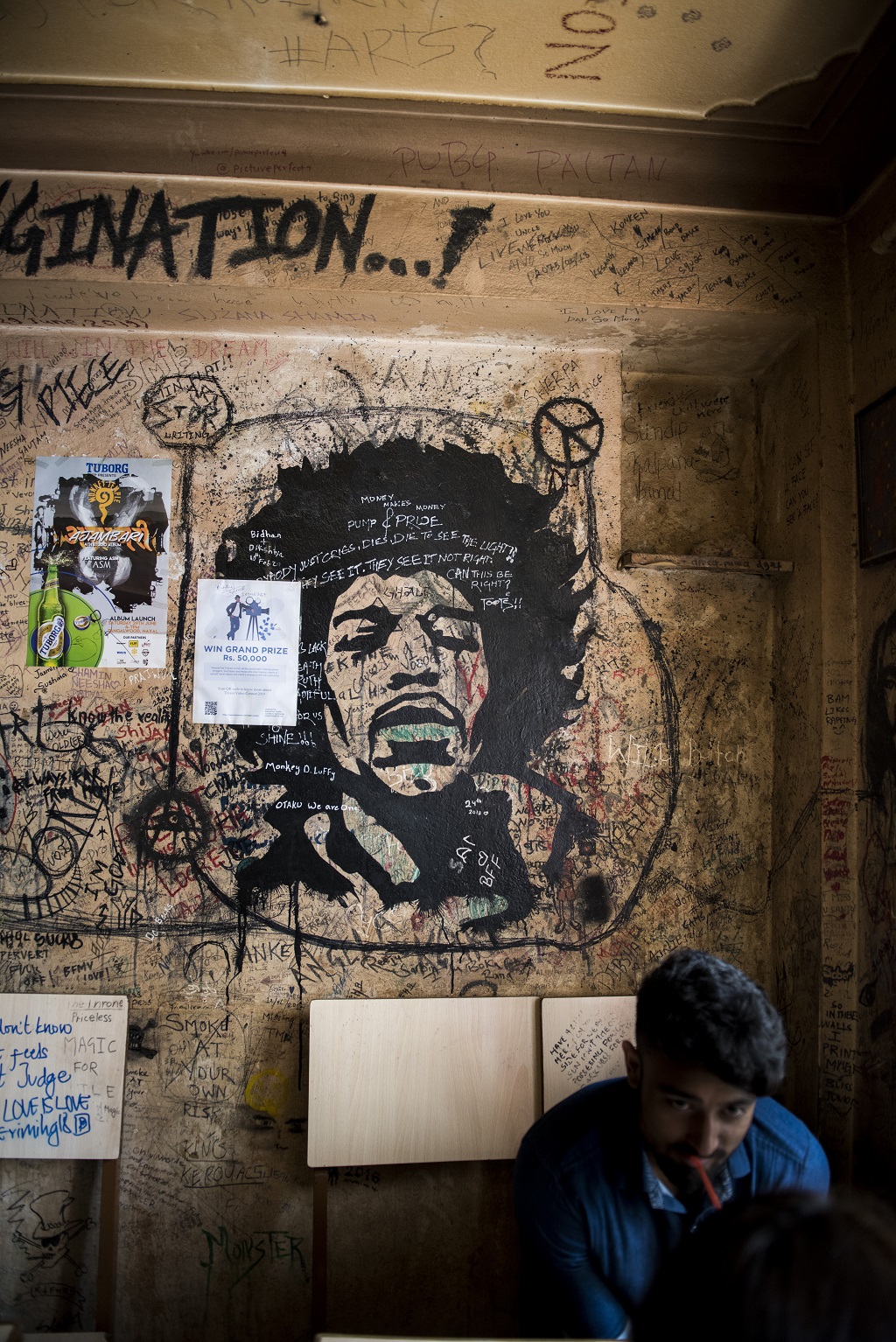
Anyone with a sweet tooth and sugar craving must not forget this amazing cake shop at Freak Street. Established in 1965 by Ram Prasad Manandhar, Snowman Café is a renowned name in the bakery busi-ness, with the same hype maintained over all these years. With no renova-tions since the beginning, the tung-sten lights, the smell of smoke, the worn out paintings of Bob Marley, and the old wooden chairs and tables take you on a time travel to the early 80s. Affordable and mouth-watering delicacies make the café a favorite of many, myself included. Continuing on his father’s foot-steps, Raju Manandhar currently looks after the business and has no plans to renovate it due to the café’s uncertain life. “Our children are not interested in the business; all of them have settled abroad. I have no idea what will happen to the café after me,” says Manandhar. Now, that is SAD for a place whose delicious crème caramel and chocolate love cakes have been included in many famous guide-books. Manandhar says with a smile on his face that celebrities like Janis Joplin and Cat Stevens have visited Snowman. The café is still filled with foreign and Nepali customers and business remains unaffected post-earthquake. Do try different types of cakes; none will disappoint.
Kumari Café
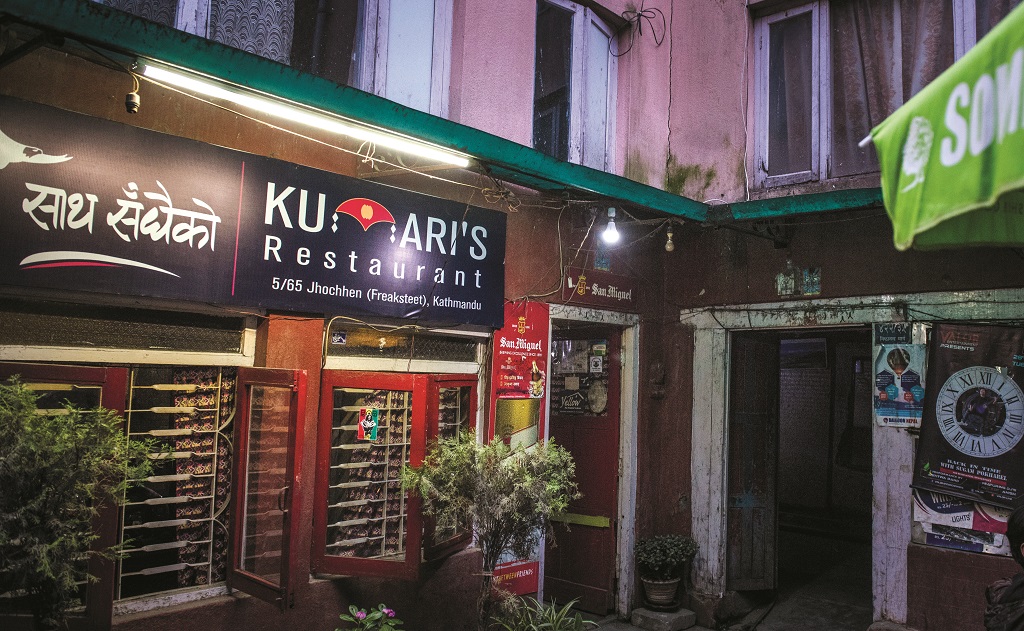 Following the list of these vin-tage eateries located on Freak Street is the Kumari Café. Estab-lished in 1980 by Madan Lal Shres-tha as a family business, the café is a known name to most regular visitors to Basantapur. Yog Prasad Poudel, who has been working as a chef there for more than 13 years, says how “the delay in the reno-vation of the Durbar Square could be beneficial as a disaster tourism strategy but a definite loss for the local restaurants.” He still hopes for the business to get back on track after reconstruction is complete. The famous Greek Mousakka served in both veg and non-veg options is a must try O
Following the list of these vin-tage eateries located on Freak Street is the Kumari Café. Estab-lished in 1980 by Madan Lal Shres-tha as a family business, the café is a known name to most regular visitors to Basantapur. Yog Prasad Poudel, who has been working as a chef there for more than 13 years, says how “the delay in the reno-vation of the Durbar Square could be beneficial as a disaster tourism strategy but a definite loss for the local restaurants.” He still hopes for the business to get back on track after reconstruction is complete. The famous Greek Mousakka served in both veg and non-veg options is a must try O
Foodmandu
First off, any resemblance of the title of this piece to a well-known food delivery service is purely coincidental! But yes, let’s talk about food. If we look back even 15 years you might remember there were very few places to eat out in town. There were bhattis selling a variety of Newari or pseudo-Newari food along with a lot of locally made strong liquor. I do confess to have been to quite a number of these, particularly in the winter when they serve warming tumba. There were ‘tourist’ restaurants in Thamel serving ‘continental’ food that was really a variation on a roti. Italian pizza: roti with tomato sauce and cheese. Mexican burrito: roti with refried beans. Middle Eastern pitta bread: roti cut into triangles. You get the picture. Naturally there were one or two good ones. Long running Fire and Ice for example. Outside of Thamel there were also long running restaurants such as Ringmo in Lazimpat. With its pictures of, surprisingly enough, Ringmo Lake on its stained and dingy walls. I never found out whether the owner was from Dolpo or whether it was a dream destination. Ringmo, I believe, has been selling its chowmein and chop-suey since the 1970’s.
And the Bakery Café was the go-to place for local families for Saturday treats. Nanglo in Durbar Marg was iconic. And Mikes Breakfast was always a great place to eat. I remembering eating there in 1990! At the top end of the market there were restaurants like Krishnarpan in Dwarika’s Hotel and the Coffee Shop in the Annapurna Hotel. But few restaurants were on the ‘must try’ list for ordinary folks and their families. A point of interest: all of these restaurants I have mentioned which have been running for 20 or more years are still running very successfully. The secret is consistency I think.
So why did the culture change from eating at home to eating out? Which came first: a change in taste driving demand or an increase in the number of restaurants seeking to attract customers? And when exactly did this happen? Fifteen years ago there were some restaurants ahead of their time. There was Organic Village in Baluwatar run by Nepalis who had returned home from the US. Organic, healthy food was served, mainly attracting an expat crowd.
There was a small, delightful restaurant run by a Nepali guy and his South American wife opposite Bhat Bhateni that sold tasty South American food and delicious cakes. These two, along with others I’m sure, could not sustain with expat custom alone and closed down. Then, as far as I can figure it, around 10 years ago something shifted. In any case now we can definitely say we live in Foodmandu!
Just recently I went to two new restaurants. One providing South East Asian food and one serving continental. Both being franchises out of India but neither selling anything remotely like Indian food. Just today I heard there is a Ramen restaurant newly opened in the premises of Park Village Hotel. To counter this there is now quite a few restaurants selling Thakali food. These are kind of upmarket places but how authentically Thakali their fare is I would not be able to tell. I do know many moons ago a treat was going to a restaurant in Surket (yes, you read that right) run by a Thakali couple. Nothing upmarket about that restaurant.
Now it seem like every time I turn around there is another restaurant opening up. As I complete my 360 degree turn, there is another hotel too. With a number of restaurants and coffee shops inside. Not that I am complaining about the variety and choices now available! No, indeed. But if I have a complaint it is that there just isn’t enough time (or money) to get round all these new eateries. Unless anyone wants me as full time food reviewer…



















